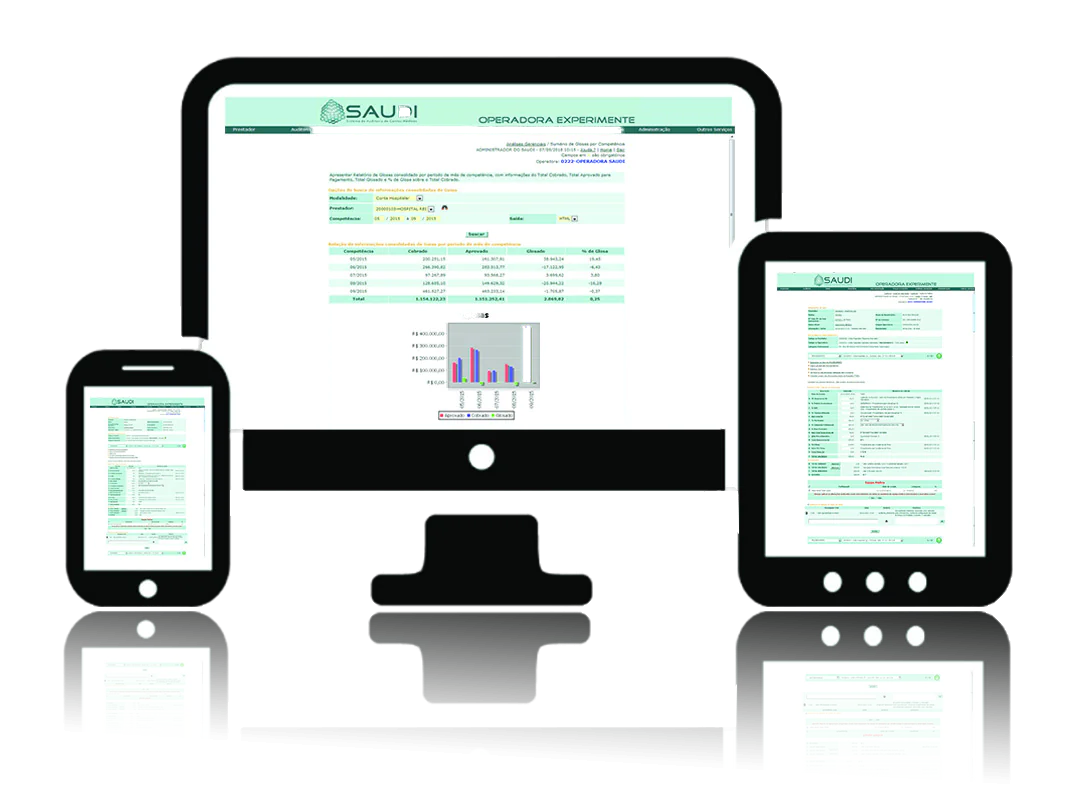See how to organize all the information to make managing your medical bills easier
Managing a large volume of documents is not an easy task. When it comes to medical bills from health plan providers, the challenge is even greater, as each of them requires many other supporting documents.
This large quantity of documents, in turn, is frequently handled by analysts, in order to ensure that the criteria for payment of services are being met.
The problem is that, in many operators, the analysis and checking of documents related to medical bills is carried out manually. This can cause damage to documentation, loss, unnecessary bureaucracy and, consequently, slow processes.
Often, the unavailability or difficulty in accessing documents also causes so-called disallowances, which consist of operators not paying for medical procedures carried out by partner establishments.
The solution to this problem obviously involves the use of technology. In the digital age, it is no longer acceptable for your company to continue to keep cabinets full of documents, nor for auditors to spend hours locating and analyzing them manually.
It is important, therefore, that operators have automated systems for medical bill management.
Digital management
Increasingly, health plan operators have opted for digital solutions that make the storage of physical documents unnecessary.
They eliminate operational costs, put an end to the problem of loss and misplacement and allow quick access to supporting documentation, facilitating audits and increasing the quality and speed of services.
Easily integrating with other applications, this software captures and stores documents sent by service providers; forward them to audit and medical production, for validation, and send them for billing.
One of the most used software is SAUDI, which offers operators features such as:
- Electronic capture: there are several options, ranging from digitization to full systems integration;
- Electronic audit: analysis of guides even before they are accepted by the system;
- Manual audit: guides are available for individual checking, with automatic alerts of possible non-conformities;
- Counter-audit: features that allow medical service providers to participate in the process;
- TISS Guide: Supports all types of TISS guide and in several versions, simultaneously;
- Sending gloss resources directly through the system, in accordance with the ANS/TISS standard (National Health Agency / Supplementary Health Information Exchange);
- Electronic Document Management (GED): all documents can be consulted in the system, with just one mouse click;
- WEB Authorizer: providers can forward their Consultation, Exam, Admission and Extension Authorization Request Guides directly via the Web;
- Request analysis: allows the operator to individually analyze the Admission Authorization, Extension and SADT Request Guides with various support features;
- Mobile audit: facilitates the work of external auditors, who can record information on medications, fees, procedures, etc.;
- Customization: development and integration to meet the specific needs of each client.
GED
One of the most important features of medical billing systems, offered by Saudi as an extra module, is GED (Electronic Document Management).
The GED not only stores, but also shares documents and facilitates the search for specific information, through the following stages:
- Reception of documents: is the transfer of the physical document to digital media. GED accepts the inclusion of documents from various sources, such as paper, microfilm, image, sound, spreadsheets and text documents, among others;
- Classification: the document is filed according to the area to which it belongs and also the topic it deals with, in an organized manner;
- Determination by the manager of the document's life cycle, from its creation to its possible destruction;
- Making the document available for user consultation.
The GED offers benefits such as:
Availability of the company's physical space, which now no longer needs to maintain those huge metal cabinets;
- Reduction of operational costs;
- Better possibility of organizing documents;
- Time saved, as it is now much easier and faster to find the documents you need.
Benefits
Among the benefits obtained with the digital management of medical bills are:
1) Cost reduction, as it eliminates possible undue payments and optimizes processes;
2) Return on investment, as the systems have a low cost in relation to the volume of benefits;
3) Practicality: the systems are easy to use and speed up processes;
4) Transparency with service providers, who have the possibility of being aware of the processes at all times;
5) Increased productivity: with the same number of auditors, more guides can be analyzed; It is
6) Adherence to processes: it is not necessary to modify company processes, as the systems adapt to any of them.
In addition to all this, the implementation of a digital management system helps the company adapt to the LGPD (General Data Protection Law), which requires maximum care with the storage and handling of customer data.
Sanctioned in August 2018, the law establishes that customers have full rights over their information, being able to request information on how it is being treated by the company and even requesting its deletion from the systems.
For operators, this is a critical point, as they deal with sensitive information from millions of people, and any failure can result in millions of reais in fines.
Success case
With the implementation of SAUDI, the Unimed Extremo Sul managed to reduce medical disallowances by 94%, according to medical accounts and exchange coordinator Darlan Figueiredo.
According to Darlan, before using SAUDI, the company faced several problems when dealing with medical bills, such as, for example, taking too long to find out about the bills, as they were posted several days after the procedure.
Audits were also quite time-consuming, as they required the analysis of physical documents and their inclusion in the system, as well as the team traveling to the client to check medical records.
This all led to a high number of glosses, straining the relationship between the operator and customers.
Also according to Figueiredo, Saudi allowed the company to reduce the time spent analyzing accounts and practically eliminate retroactive disallowances, reducing, as a consequence, the team exclusively dedicated to processing accounts.
Furthermore, carrying out some processes, such as parameterization and analysis of statistical and management data, has become much easier. To check out this and other SAUDI success stories, browse the SAUDI blog, an exclusive channel to provide information that facilitates the day-to-day life of the analyst and/or medical account manager.









